It’s autumn. It’s autumn outside, in the cycle of midwestern weather, which is why I have this gorgeous picture:
It’s also autumn in the cycle of my body, which means I’m in my luteal phase, and my period is coming later this week.
A few years ago, I read an article about cycle syncing. It’s the idea that you’re aware of all four phases of your cycle, not just your period, and you learn how your body feels and functions differently depending on each hormone shift. Which, cool, but the first step for me was simpler: knowing when my period would start, and avoiding scheduling any activities that day that would require energy.
Now, I’ve gone much further in the process, and each month during my luteal phase, I sleep in a cave under the moon and babysit little wolf pups. Teddy, I’m kidding. (Teddy is vaguely worried that I’m getting too woo-woo with all of this. Which, considering I now choose my daily jewelry based on where I’m at in my cycle, I won’t fight her about.)
My mom taught me to track my period, which in 2010 meant that I dragged images of each month onto a Word document, printed it, and kept it updated with a Crayola marker in my bathroom cabinet. But I didn’t think much about my cycle beyond that.
Till now! Well, till the last few years.
I listened to India Rakusen’s award-winning podcast 28-ish Days Later. I bought Masie Hill’s book Period Power.
I got a period disc, which I’ll tell you all about in another article.
And!
Crickets.
Oh, I finally read Are You There God, It’s Me, Margaret.
And!
That’s about it.
Art connects us with other humans. Sometimes it shows us something we already know, and that’s why we love it. Sometimes it shows us something we didn’t know, and that’s why we love it.
Sometimes it’s just pretty or just historically important or just entertaining. Sometimes it connects us to other people who share our experiences. It can delight us or upset us or lots of other things. It’s ineffable and encompassing, and this isn’t a treatise on art! Also, I hope you’re feeling chill, because for the sake of this article, art = music and TV shows and movies. I didn’t get into paintings or experimental plays or highbrow sculpture. For today, art = media, and I use the term media more. Heads up.
I read and watch movies and listen to music. And you know what? I can think of basically no media that represents my monthly experience of having a period.
Which is strange, because I spend a huge amount of time dealing with my period, relative to the amount of time I spend on other topics that books and movies and music cover over and over and over. Do you know how many times a year I bleed? Twelve times. Five days each month, so you could also say sixty times. Do you know many times per year I fall in love or trip in the cafeteria or find out I’m the princess of a small country? Not sixty times, that’s for sure. Honestly, not even twelve.
Let’s start with music. So many songs are about romance. There’s also songs about friends, work, and parties. When I started this article, I couldn’t think of a single song about periods. Off the top of your head, can you?
I did some research. The first few articles were lists of sad songs to listen to on your period. Sad songs about romantic love, not blood. But Pitchfork had an article that covered all the bases. I learned about Mary J. Blige’s song “PMS,” which got A-side placement on No More Drama, her fifth album. Dolly Parton has a song called “PMS Blues,” which includes this gem of a line: “Nothin' fits me when it hits me / Rantin', ravin', misbehavin' / PMS blues.” There’s thirteen total songs on Pitchfork’s list, which is . . . just not a lot.
Taylor Swift, who’s written about physical experiences as specific as eating disorders and miscarriage, has not once mentioned periods. She’s written almost 300 of the songs that make up the modern music scene. And no periods! What is more tortured-poets-coded than period cramps? I mean, look at this album cover:
Celebrities almost never talk about periods. Are they all skipping their period via birth control? Are there other ways to avoid it that are top-secret and ultra-expensive and only available to people who know about a certain doctor behind an unmarked door at an office park in Burbank? Is there a magical, Raya-cleared-only cure-all that makes periods restful, relaxing, and fun? Is that what the smoothie from Erewhon is actually for?
What about movies? Well there’s Carrie, obviously, says the internet; I’ve never seen it. Vulture’s article “A Brief History of Onscreen Periods” wasn’t comprehensive, sure, but it only listed six movies, one per decade, starting with Carrie in 1976. Megan remembered the tampon scene in She’s the Man. I’m sure there’s more movies, but I couldn’t think of any.
And TV shows! Belle thought of two times periods were mentioned in Swedish TV shows she’d watched, but then she pointed out that neither time was the female character actually on her period. Megan found online that The Queen’s Gambit had a period scene, but it was generally skewered for being lazy writing.
The more I hunted, the more I found there’s a sort of funnel. Here it is:
And here’s the zoomed-in view of the bottom of the funnel:
First, there’s media without periods. Which is, as we said, most media.
Then, there’s media where the female character is talking about her period because she might be pregnant. These are male-adjacent periods. The moment is less about periods and more about sex. It’s about a period as the opposite of pregnancy. It’s Daphne waiting to see whether she’ll get her period in Bridgerton. It’s books where periods = not cheating on your wife and periods = incentive for abusive men and periods = respite from abusive men. I mean come on: if the woman is pregnant, this is still media that doesn’t have periods!
Then you keep thinking, and eventually you think of non-male-adjacent period media, which for me and Megan and probably you was, first and foremost, Are You There, God, It’s Me, Margaret?. It’s the classic period book. Megan remembered The Poet X. That reminded me of Redwood Court. You’ve got Tracee Ellis Ross and Marsai Martin as a mother-daughter duo killing it in Black-ish. But interestingly, these stories are all about the first time a girl gets her period.
First-time period stories are important, yes. The whole point of this article is that it’s useful to see your experience reflected in art. But the first time you get your period is different from the regular experience of having a period each month forever until menopause. And, as Caroline Kitchener explained in her article about the Queen’s Gambit’s period scene, first-time periods are often a cheap storytelling shortcut. The main character Beth talks to her crush, feels a stomach cramp, runs away from her chess tournament, and finds blood streaming down her leg. Are you trying to tell me she’s…grown? So cool. So realistic. So subtle.
But even first-time periods are rare. Periods at all are rare. Except, like, in real life!!
I couldn’t think of a single fiction book for adults that discussed a period solely in relation to a woman’s monthly experience. Let me show you the funnel once again.
The closest thing I could think of was a brief line in Emily Henry’s Happy Place, where the main characters are talking about scheduling and their apartment calendar, and Miles says, “ ‘Could you by chance be referring to the wall-sized whiteboard where you track your paychecks, your phone calls to your mom, and your menstrual cycle?” (80). Which, three cheers for having no shame around your period even when your roommate is a man you hardly know. Also, are Daphne and I both cycle syncing? Maybe she takes a shift caring for the baby wolves when I’m in the other phases of my cycle. Periods being normal, even with a male roommate—this is what we’re shooting for! But really—one tiny mention in one book—that’s it?
Periods are a perfect story tool. There’s the external layer of the situation—blood is flowing, and a method of staunching it must be procured. There’s lots of pain and discomfort. This could so easily catalyze almost any action you need in your plot.
And yet. Where are all the periods!?
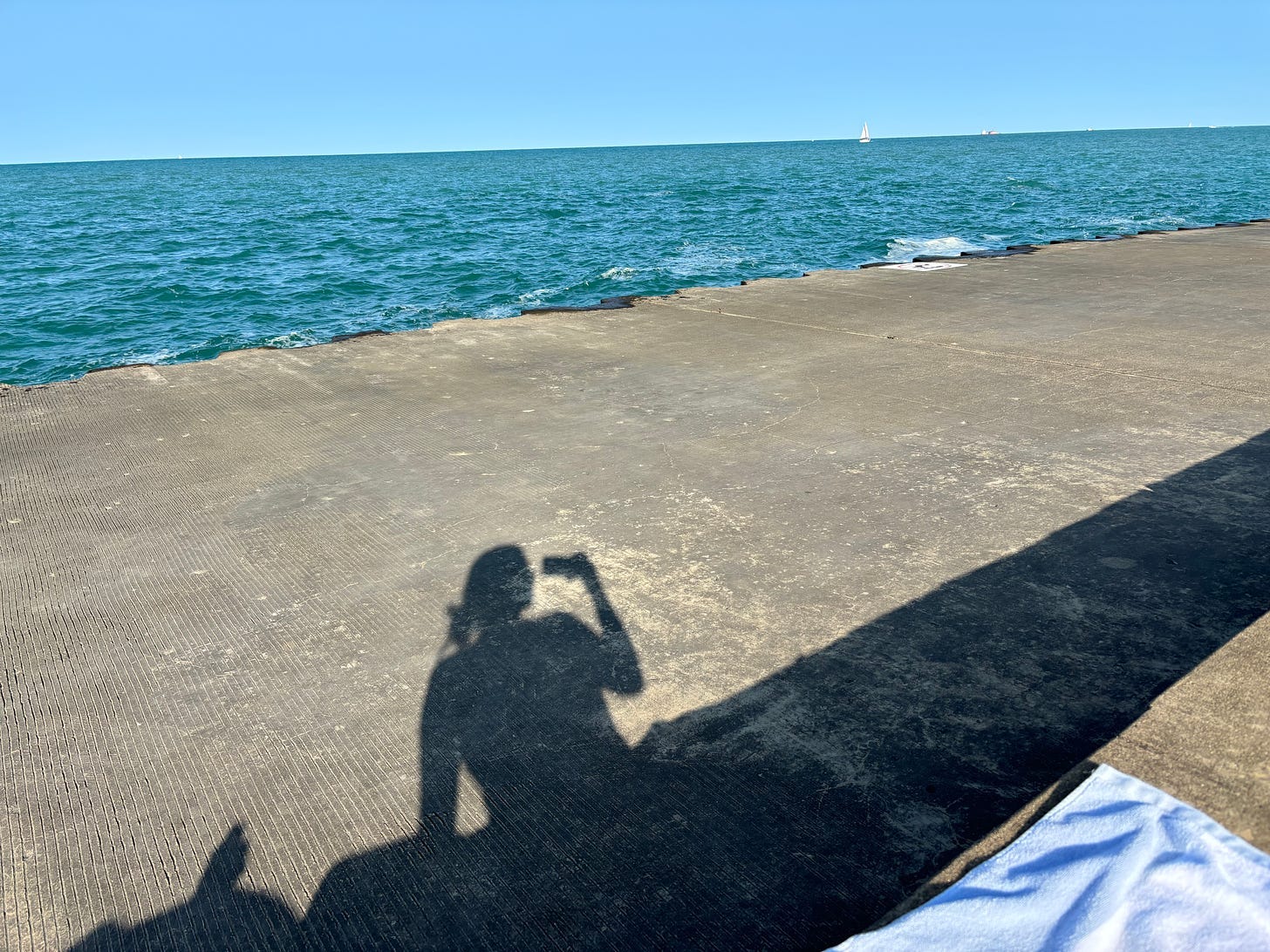
Sometimes when I’m on my period, I try to go out into the world and end up keening over. I feel crummy and hungry and nauseated and worn out. Often my legs give out for a bit, and I have to lie down or just, like, catch myself on a nearby counter. There’s back and stomach aches and pains. Trying to do normal, daily tasks and then having to swallow my bile or stifle a moan during a violent cramp.
Periods deserve representation just for existing, but beyond that. Periods would be great for plot development, but beyond that. Think of the symbolic meaning you could create, in your A24 films and art-house vibes-only literature, just from monthly bleeding! I’ll get you started:
Regeneration
The need for rest
The importance of fallow as well as pregnant spaces
The cycles of seasons and energy and bodies
The way art looks now, periods don’t matter.
But in real life, periods do.
Next week, I’m writing about a period that was used as a valid, interesting plot point in a TV show. It’s the single example that I could think of where media represented a regular period as a regular experience. It’s one of the things that made me start thinking about all this in the first place.
In the comments, I’d love to hear what period media you thought of. I know I missed bunches! And give me your perspective on it—where does it belong in the funnel? Is it creative and generative or basic and reductive, or somewhere in between? If anyone comments the example that next week’s article is about, you win! I’d love that.
And finally, a book about a period was just longlisted for the National Book Award in the kids/middle grade category. I heard about it too late to include it in the research for this piece, but I’m excited to buy and read it. A school-themed pun for the title? Yes, please. Congratulations to Ali Terese! It’s time for Free Period.

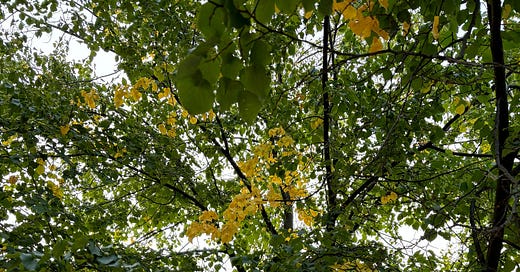



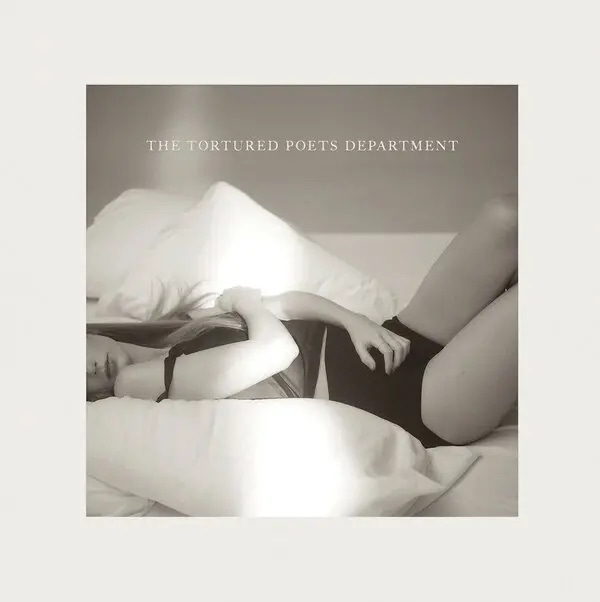
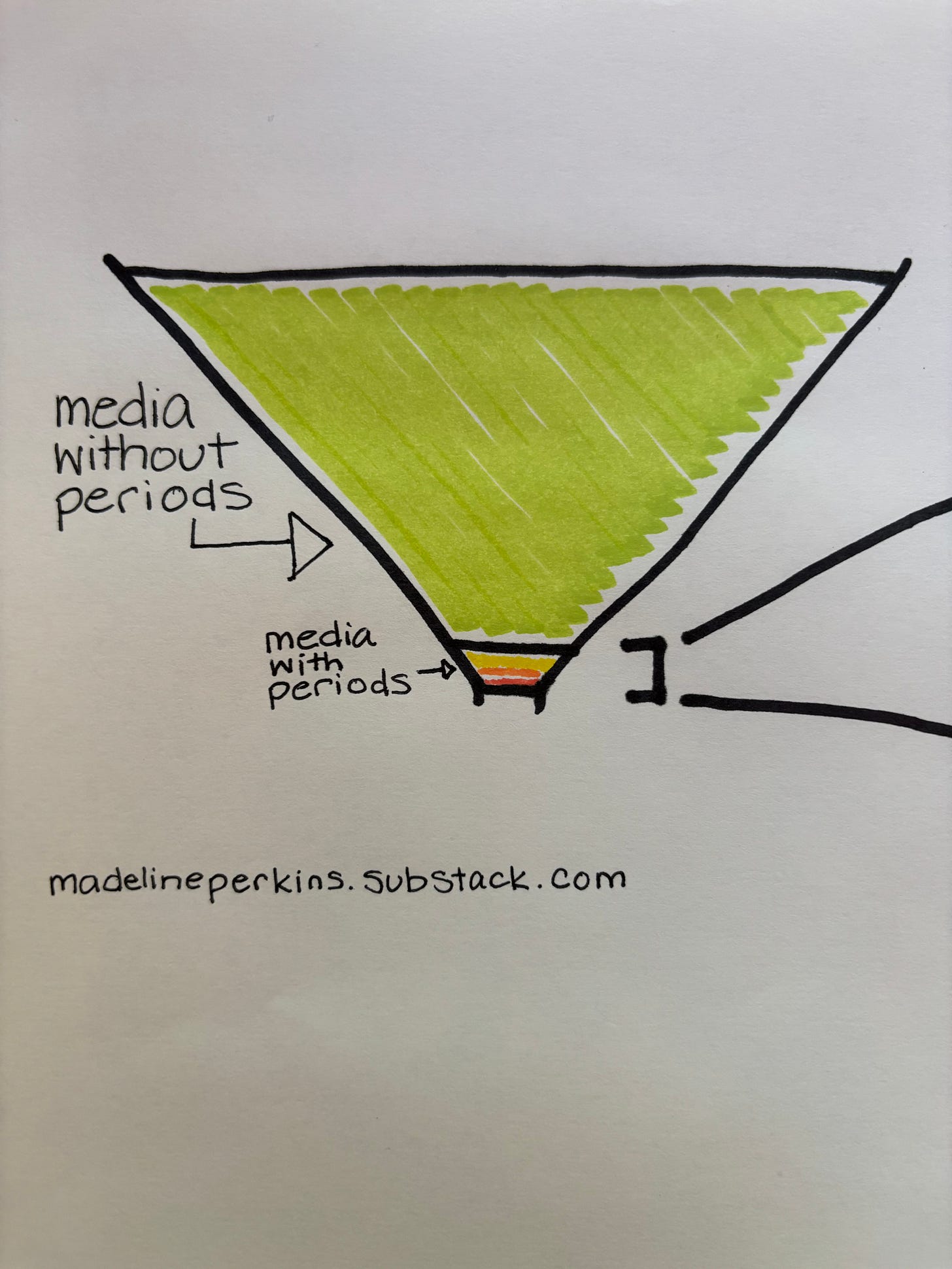
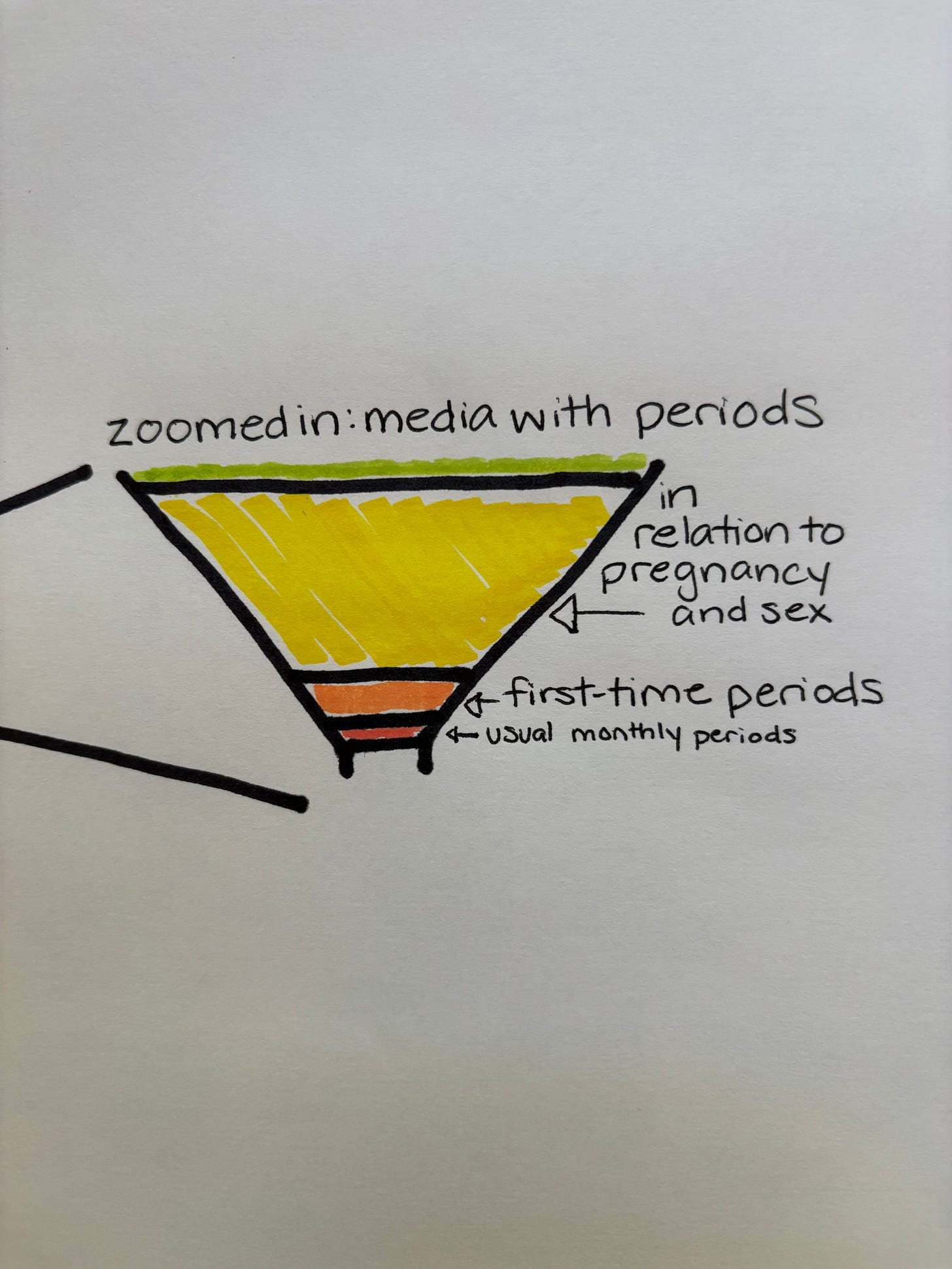
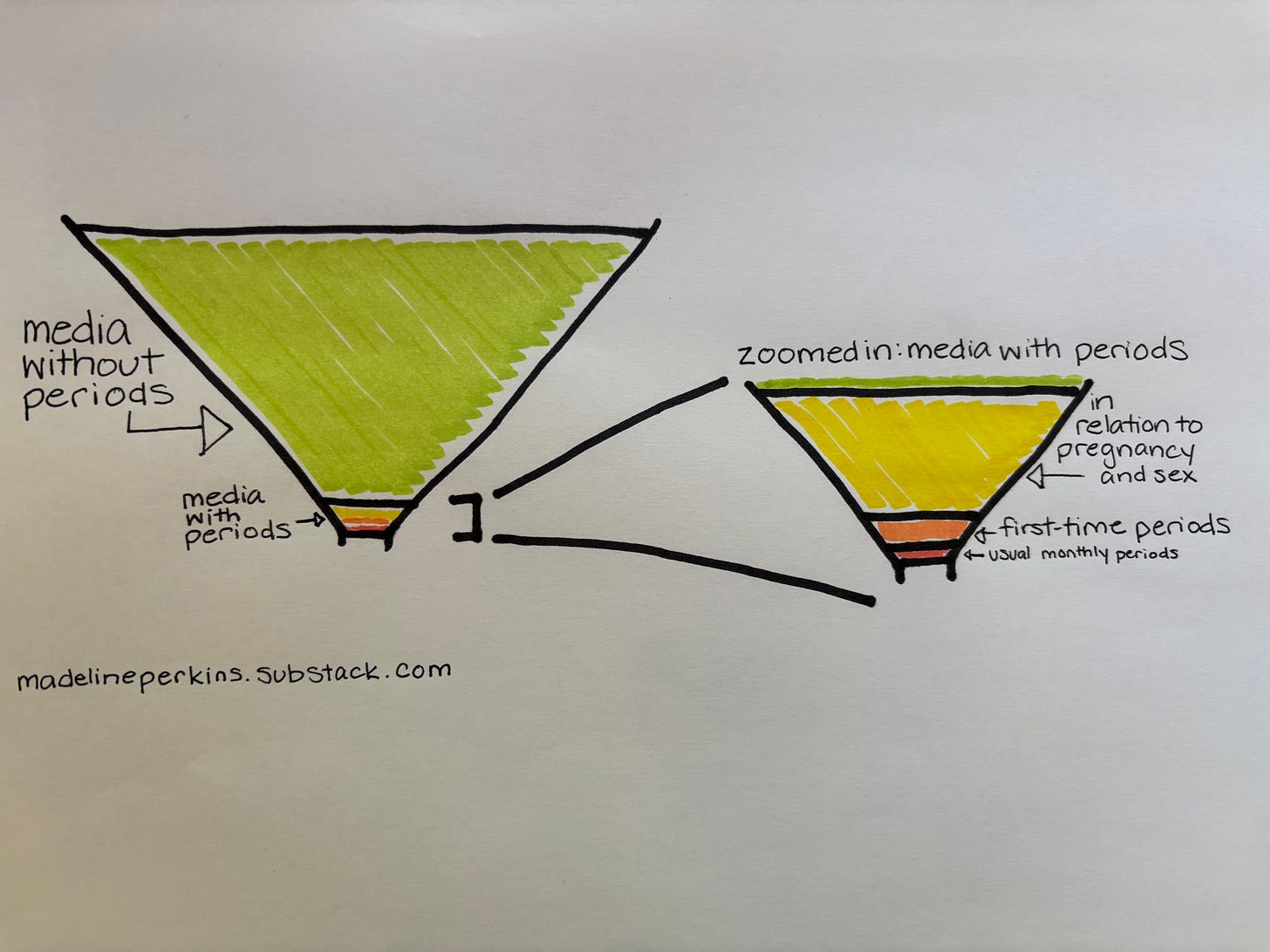
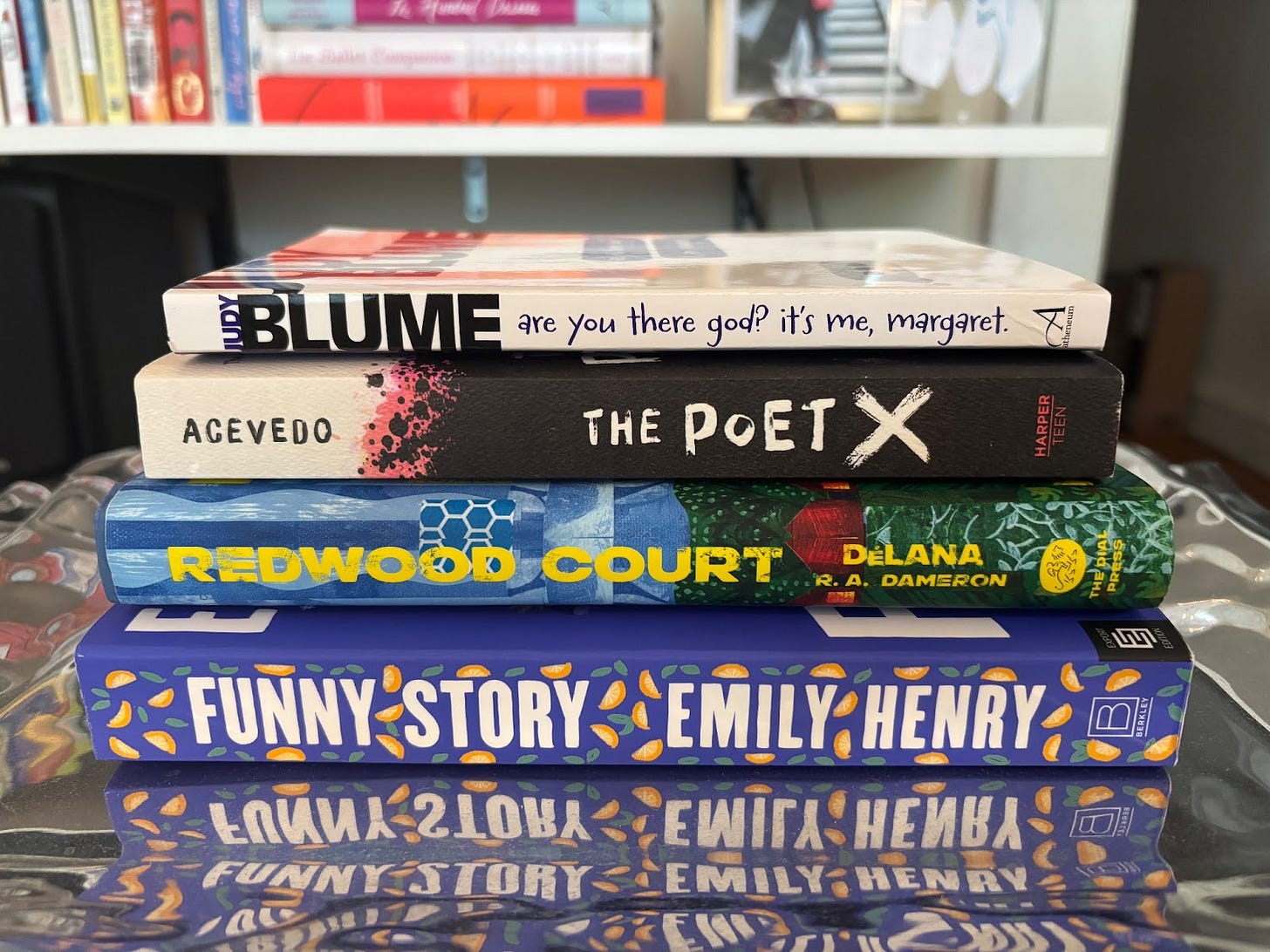
New Girl is the only TV thing I can think of with notable period representation that doesn’t fall into any of the above categories! Though it’s obviously played for laughs in that the men are ~confused~ or whatever. Also there’s an episode of This American Life from a few weeks ago called “How Are You Not Seeing This?” that involves people trying out a period cramp simulator and it is surprisingly very emotional, highly recommend.
Also I am in the period disc club and I LOVE it.
The only thing I can think of is the scene in Schitt's Creek where the man is babysitting a teenage girl and she gets her period on the motel bed and he panics and doesn't know what to do.... but, as you mentioned in some of the stories you cited, the plot point here is the Grossness and Foreignness of periods for Adult Men....